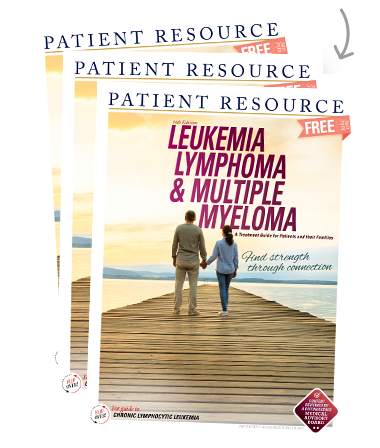Follicular Lymphoma
Making the Diagnosis
Several types of tests are used to diagnose follicular lymphoma. These tests provide details that help your doctors make a specific diagnosis and assign a stage to the cancer. (See Staging.) Accurately diagnosing and staging your follicular lymphoma is essential for your doctor to determine the best treatment options for you.
Physical Exam
One of the first steps your doctor will take is to get your complete medical history and perform a thorough physical examination. During the physical exam, the doctor will pay close attention to your lymph nodes, spleen and liver. If lymphoma is suspected, a biopsy of the potentially affected area will likely be recommended.
Biopsy Procedures
A biopsy is the only way to accurately diagnose follicular lymphoma. The type of biopsy your doctor chooses to do is based on your specific situation.
Excisional or incisional biopsies are the most common types of biopsy done if follicular lymphoma is suspected. The doctor removes either an entire lymph node through a cut in the skin (excisional biopsy) or a small section of a suspected tumor (incisional biopsy). For both types, local or general anesthetic is used as necessary.
A fine-needle or core-needle biopsy may be used to diagnose follicular lymphoma. During a fine-needle procedure, computed tomography (CT) or ultrasound is used to guide the insertion of a fine, thin needle into the lymph node or other organ that’s suspected to have follicular lymphoma cells. Fluid or small pieces of tissue are then aspirated. This is rarely a good way to make a diagnosis of lymphoma.
In a core-needle biopsy procedure, the needle is larger and a small cylinder of tissue is removed.
Bone marrow biopsy samples typically are taken from the back of the pelvic bone. During a bone marrow biopsy, a needle is inserted into the bone, and a small piece of bone and marrow is removed. A local anesthetic is used, so only pressure and brief pain are felt during the procedure.
Tissue samples obtained during these procedures are examined by a pathologist to see if follicular lymphoma cancer cells are present. The pathologic evaluation of biopsy samples offers the most valuable information for the diagnosing and staging of follicular lymphoma. In some instances, the pathologist may not be able to identify all the necessary information because the tissue sample is too small. When this happens, another biopsy may be necessary.
Blood Tests
Blood tests are frequently ordered to help diagnose follicular lymphoma. A complete blood count (CBC) measures the number of red and white blood cells and platelets in the blood. Low blood cell counts can indicate that the cancer has spread to the bone marrow and is affecting the formation of new blood cells.
Blood chemistry tests to examine kidney and liver function may be ordered, and your doctor might request a lactate dehydrogenase (LDH) blood test as well, as LDH levels can sometimes be high in people with follicular lymphoma. Lastly, your blood might be tested for infections, such as hepatitis or HIV, because these viruses can affect your treatment.
Diagnostic Imaging Studies
Doctors use imaging studies primarily to closely examine the affected area and to see if the cancer has metastasized (spread), which aids in defining the stage of the disease. You may not need every diagnostic imaging study listed here. Your doctors will consider the results of your physical exam, biopsy findings, blood test results and general health status in deciding which tests will provide the most useful information.
- Chest X-ray is a photograph of the structures inside your body, particularly your bones. Chest X-rays can help doctors determine whether any lymph nodes in the chest area are enlarged.
- Computed tomography (CT) produces three-dimensional, cross-sectional X-ray images, so it can provide more precise details in soft tissues than a standard X-ray. CT scans provide an excellent assessment of the size of the lymph nodes, confirming whether they’re enlarged. In cases of follicular lymphoma, CT images of the abdomen, pelvis, chest, head and neck can be useful.
- Magnetic resonance imaging (MRI) uses strong magnets and radiowaves to produce detailed images of lymph nodes. MRI is not used as often as CT for diagnosing follicular lymphoma, but it can help determine whether the cancer has spread to the spinal cord or brain.
- Positron emission tomography (PET) images are not as finely detailed as those from CT or MRI, but they can provide useful information, such as whether an enlarged lymph node contains cancer cells and whether an area that looks normal on a CT scan might actually be follicular lymphoma. PET scans are the most sensitive tests for finding follicular lymphoma.
Be sure to talk openly with your health care team to ensure you understand everything involved in the diagnostic phase of your cancer care.
Questions to Ask Your Medical Team About Your Prognosis
If you would like to know more about your prognosis (predicted outcome from treatment), do not be afraid to ask your doctor. Learning more can help you better plan for the future.
- Is my follicular lymphoma curable?
- If I go into remission, what does that mean?
- Is there anything I can do to improve my prognosis?



